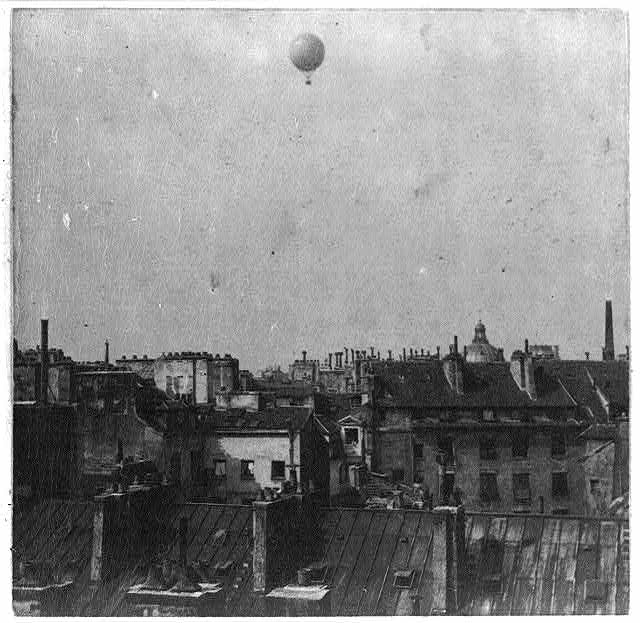
The Giffard dirigible, created by Giffard in 1852
On February 8, 1825, French engineer and aviation pioneer Baptiste Henri Jacques Giffard was born. He is best known for being the first who succeeded to build a steam powered and steerable aircraft, the Giffard dirigible.
Henri Giffard – From Locomotives to Balloons
Henri Giffard was born in Paris. The tinkerer was enthusiastic about steam engines. After studying at the Collège royal de Bourbon, he began working as a technical draftsman for the St. Germain railway line. He earned a fortune by improving steam engines. For example, he developed a revolutionary steam jet pump. Giffard made his first balloon ascents at the age of 18.
A Navigable Balloon
Ever since the first balloon ascents of the brothers Montgolfier in the late 18th century,[8] one of the main drawbacks of ordinary balloons is their dependency of the winds for navigation. The only way to navigate a balloon is to manoeuvre it to a height where the wind is blowing in the appropriate direction. First suggestions for a dirigible balloon date back to 1784, when Jean-Baptiste Meusnier de la Place proposed a design for an impact airship. Due to the lack of propulsion units not yet available, he proposed a propeller driven by muscle power, which the airship occupants should operate. Some seven decades after Jean-Baptiste Meusnier de la Place, Giffard took up his ideas for the first time in a profound way. After he had already helped the French engineer Jullien in 1850 to build an airship whose propeller was driven by a clockwork, he applied for a patent in 1851 on the “Application of steam in airships“.
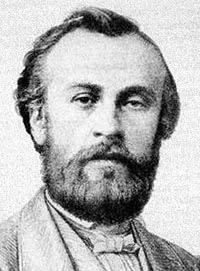
Henri Giffard (1825 – 1882)
Giffard’s Dirigible
Together with two young engineers, Giffard built a cigar-shaped airship with a length of 44 meters and a diameter of 12 meters, which could hold 2500 m³ of gas. The airship was powered by a steam engine weighing 45 kilograms and producing 3 HP. The ship took off for the first time on 24 September 1852. The 27.5 km long flight from Paris to Trappes at a speed of eight kilometres per hour is regarded as the first manned motorised flight in history. Giffard recognized after this first flight that the dead weight of the steam engine was too high and its performance insufficient. The engine itself was believed to be a lot lighter than any previously built. Coke was employed as fuel while no flame came into contact with the outer air. The products of combustion, cooled in the return flue, were projected downward through an inverted smoke pipe, into which the steam from the cylinder was exhausted. [1,2]
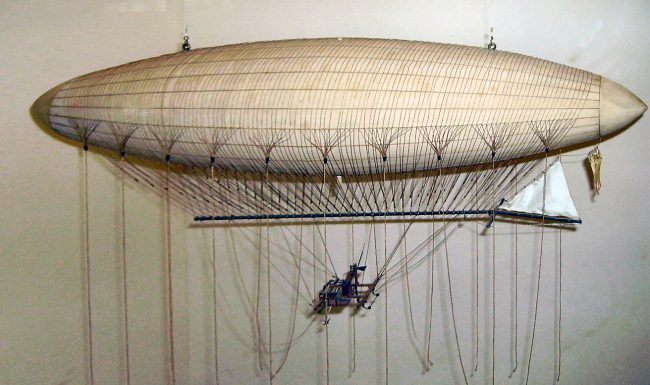
Model of the Giffard Dirigible, Mike Young at the London Science Museum
Improved Steering vs Instability
His first experiments in 1852 were quite successful, but Giffard was convinced, he needed more time and energy to improve the steering abilities. Due to financial difficulties, Giffard was enabled to make a second trial only in 1855. His new balloon was 230 ft long and some changed were made to reduce the resistance. However, these changes caused instability. The balloon was heavily blown by the wind and Giffard was unable to handle it. At some point, the balloon tipped up and as they reached the ground, the gas bag slipped out of the netting and went into pieces. This accident nearly cost Giffard his life, but still, he was convinced to make further improvements. However, the interest in building airships and balloons declined noticeably at this time.
The Giffard Injector
On February 1, 1858, Giffard took out a new patent for an injector system that operated by centrifugal force but was threatened with a lawsuit for plagiarism. As a replacement, he patented the injector, which made his fortune on May 8, 1858. Without any moving parts it is composed of two cones separated by a free interval. The steam used to operate the device condenses by abandoning its speed and transforming it into pressure that it transmits to the water that then feeds the boiler, without any waste. In fact, the pressure transmitted to the water is thus higher than the initial pressure of the steam .In 1863, he was appointed a Chevalier of the Légion d’honneur. Due to his invention of the injector, Giffard finally had a decent financial backing and built in 1867 the great captive balloon for the Paris Exposition of that year. He built one in London one year later and in the 1870s, Giffard was known to have performed several experiments to improve his airships. Henri Giffard was the first known person to drive a balloon with a motor and a steam engine. [1]
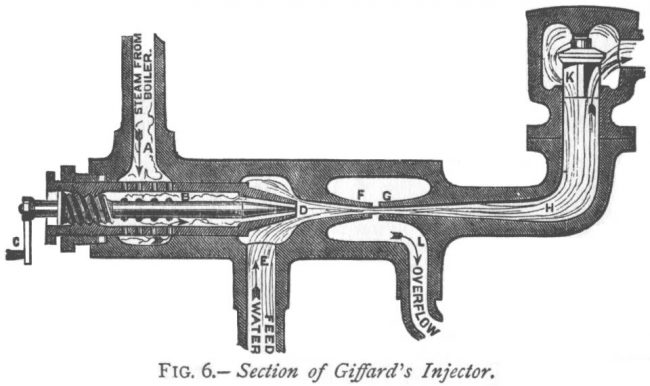
The Giffard Injector
Later Life
In 1874, he designed a suspension system for railway wagons. Contrary to the current trend of using coal gas (easier to obtain), he preferred to rely on hydrogen (better carrier), concentrating on production methods. He perfected the hydrogen manufacturing process on the eve of the construction of his new giant balloon (Le Grand Ballon Captif). He built a 25,000 m3 captive balloon for the Paris Universal Exhibition of 1878, capable of carrying 40 passengers. This balloon, located in Les Tuileries, was one of the exhibition’s main attractions. A dozen climbs a day took the passengers up to more than 500 meters. In addition to the captive balloon, the machine used to produce the gas has made it possible to inflate numerous free balloons, allowing various ascents, sometimes in groups (up to three balloons simultaneously).
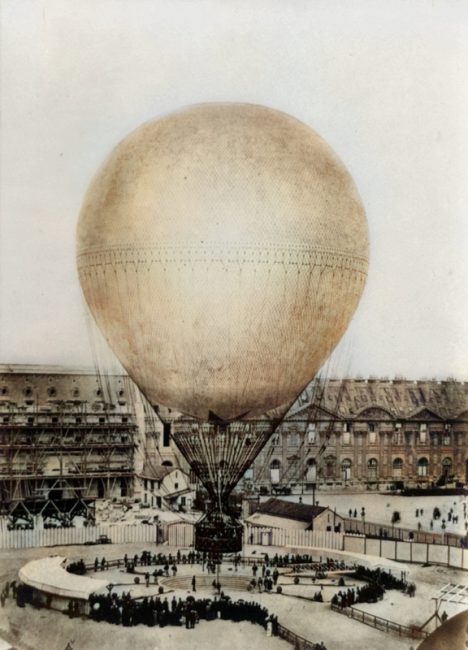
Henri Giffard balloon at the Tuileries. Photo by Prudent René Patrice Dagron, 1878.
Death
In response to his declining eyesight, Giffard committed suicide on April 15, 1882, breathing chloroform, bequaething his estate to the nation for humanitarian and scientific purposes.
Early Balloons (1972) Paul Garber – History Of Flight, [9]
References and Further Reading:
- [1] Henri Giffard at Today in Science
- [2] Henri Giffard at the History Forum
- [3] The Giffard Airship at the Science Museum
- [4] Henri Giffard at Wikidata
- [5] Science Museum – Home – The Giffard Airship, 1852., Science Museum
- [6] “A MONSTER BALLOON”. Adelaide Observer. XXXIII (1838). South Australia. 23 December 1876. p. 20.
- [7] Giffard, Henri, Henri Giffard papers, 1852-1910,
- [8] More than just hot air – the Montgolfier-Balloons, SciHi Blog
- [9] Early Balloons (1972) Paul Garber – History Of Flight, AIRBOYD @ youtube
- [10] Timeline of Airship Aviators, via DBpedia and Wikidata




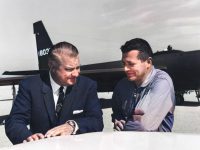

Pingback: Whewell's Ghost
Pingback: Whewell’s Gazette Year 2, Vol. #31 | Whewell's Ghost